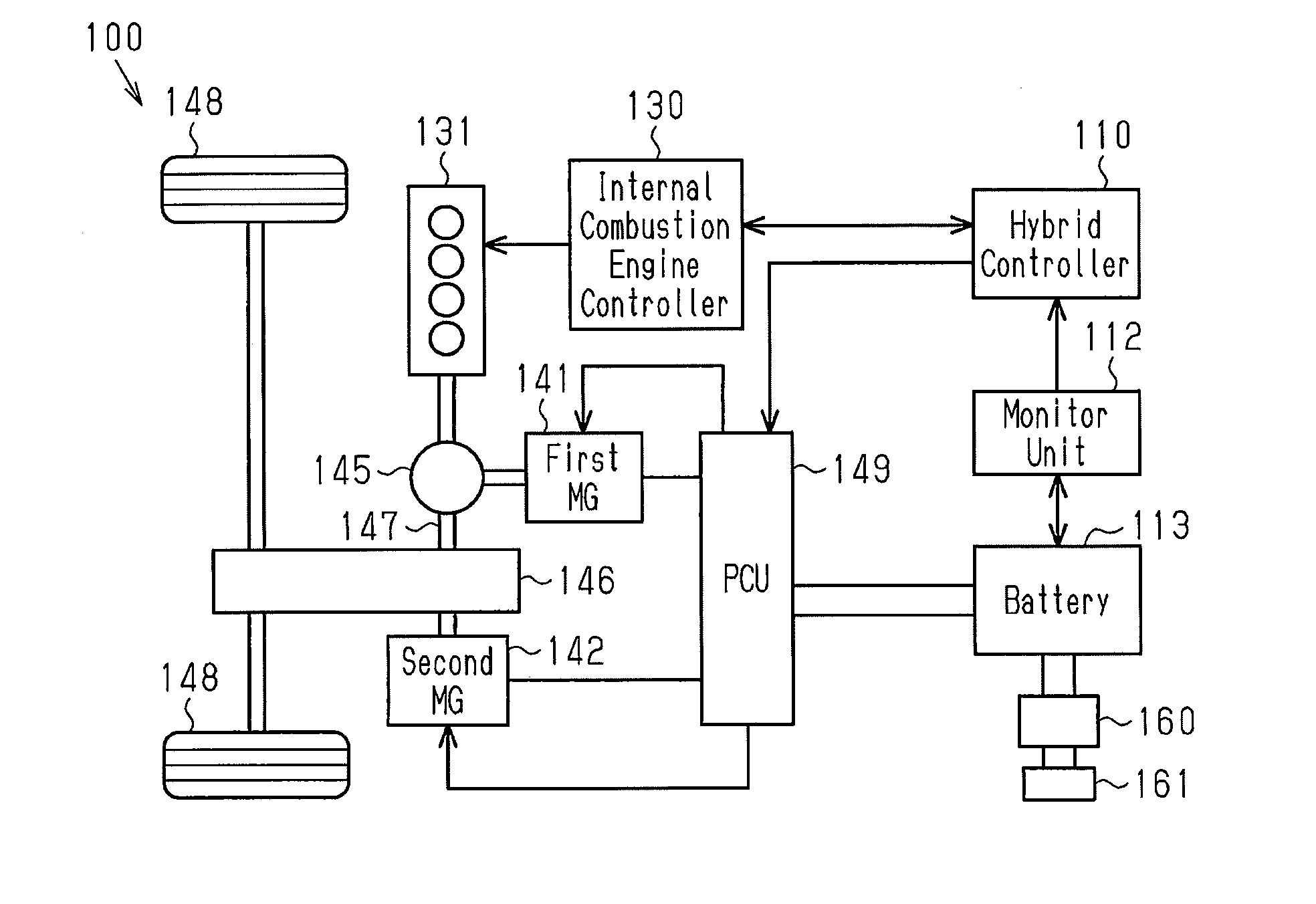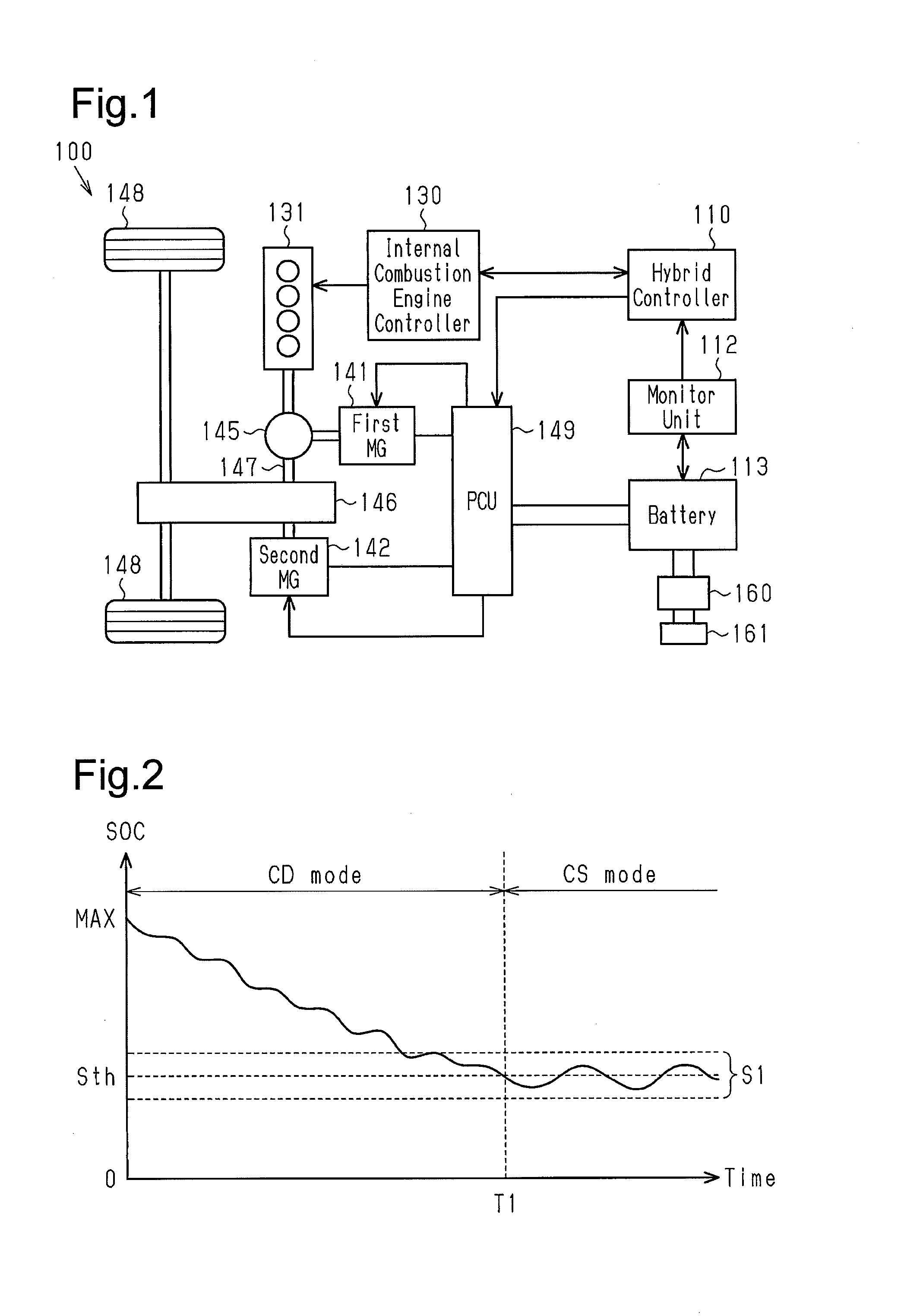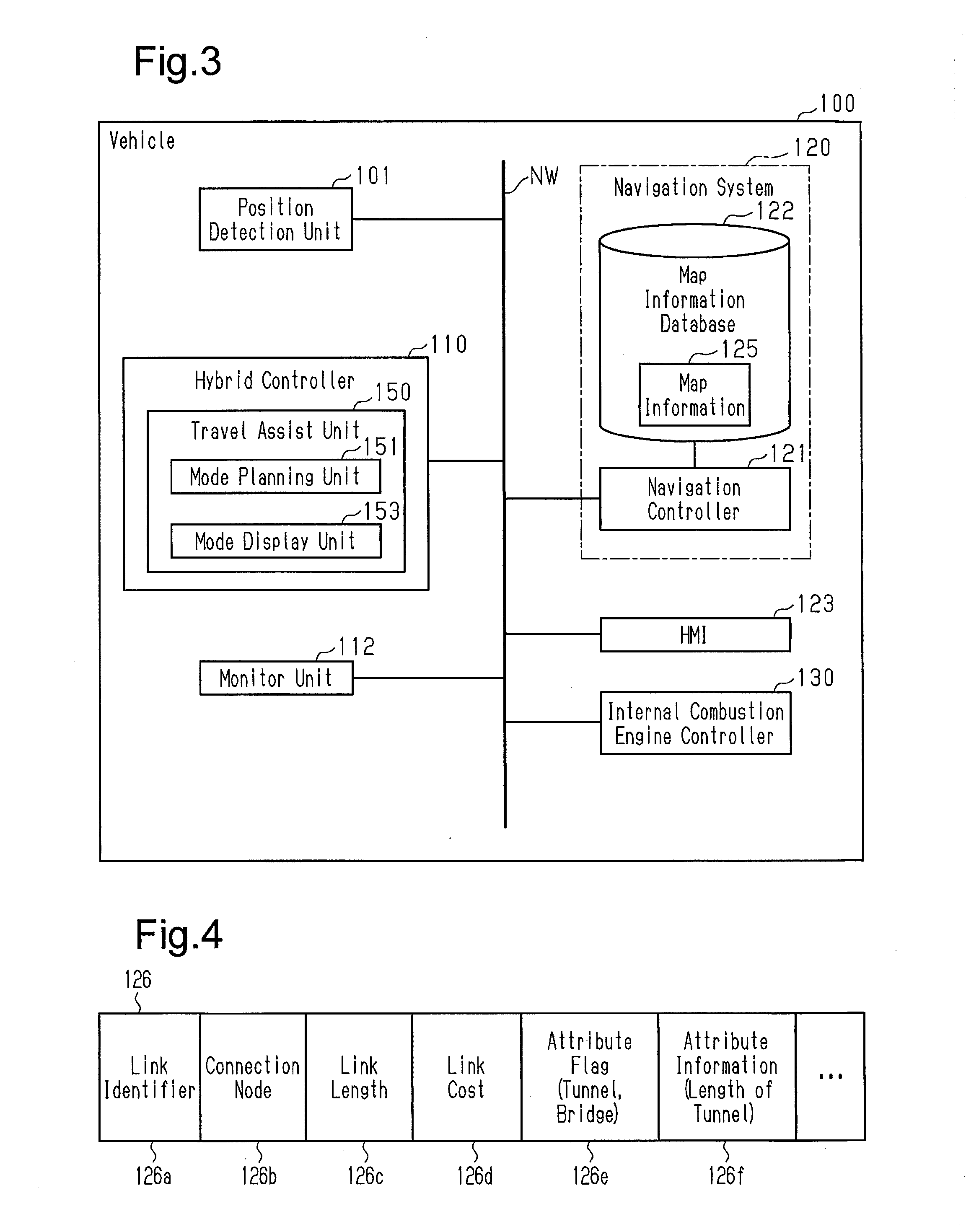Vehicle information processor
a technology of information processor and vehicle, which is applied in the direction of external condition input parameters, propulsion using engine-driven generators, transportation and packaging, etc., can solve the problems of limiting a situation in which the actual stored power amount is surplus, difficulty in obtaining altitude, and increase the consumption of stored power. , to achieve the effect of increasing the consumption of stored power
- Summary
- Abstract
- Description
- Claims
- Application Information
AI Technical Summary
Benefits of technology
Problems solved by technology
Method used
Image
Examples
first embodiment
[0035]A first embodiment of an information processor for a vehicle will now be described with reference to FIGS. 1 to 9.
[0036]The schematic structure of a vehicle to which an information processor for a vehicle is applied will now be described with reference to FIG. 1. A vehicle 100 is a plug-in hybrid automobile that uses an internal combustion engine 131 and a second motor generator 142 (second MG), which is a motor, as drive sources.
[0037]The internal combustion engine 131 is mechanically coupled to drive wheels 148 by a power distribution mechanism 145 and a reduction mechanism 146. The internal combustion engine 131 is controlled by an internal combustion engine controller 130.
[0038]The power distribution mechanism 145 includes a planetary gear having a ring gear, a pinion gear, a sun gear, and a planetary carrier. The power distribution mechanism 145 distributes drive force, which is generated by the internal combustion engine 131, to an output shaft 147 and a first motor gene...
second embodiment
[0106]A second embodiment of an information processor for a vehicle will now be described with reference to FIGS. 10 and 11. Here, the description will focus on the differences from the first embodiment. The information processor of the present embodiment basically has the same configuration as that of the first embodiment. The overlap will not be described.
[0107]The present embodiment and the first embodiment both set a zone including the load unknown portion, in which the travel load cannot be calculated, to the CD mode. However, the present embodiment differs from the first embodiment in that the zone including the load unknown portion is set to the CD mode if the proportion of the load unknown portion is greater than or equal to a threshold value.
[0108]As shown in FIG. 10, when a zone In includes a load unknown portion 210 such as a bridge or a tunnel, the mode planning unit 151 subtracts the length β of the load unknown portion 210 from the overall length α of the zone In to ca...
third embodiment
[0118]A third embodiment of an information processor for a vehicle will now be described with reference to FIGS. 12 and 13. Here, the description will focus on the differences from the first embodiment. The information processor of the present embodiment basically has the same configuration as that of the first embodiment. The overlap will not be described.
[0119]The present embodiment and the first embodiment both set a zone including the load unknown portion, in which the travel load cannot be calculated, to the CD mode. However, the present embodiment differs from the first embodiment in that a zone including a load unknown portion is divided into the load unknown portion and a portion other than the load unknown portion. The load unknown portion is set to the forced CD mode zone. In the portion other than the load unknown portion, the travel load is calculated and the mode is set.
[0120]As shown in FIG. 12, when a zone In includes the load unknown portion 210 such as a bridge or a...
PUM
 Login to View More
Login to View More Abstract
Description
Claims
Application Information
 Login to View More
Login to View More - R&D
- Intellectual Property
- Life Sciences
- Materials
- Tech Scout
- Unparalleled Data Quality
- Higher Quality Content
- 60% Fewer Hallucinations
Browse by: Latest US Patents, China's latest patents, Technical Efficacy Thesaurus, Application Domain, Technology Topic, Popular Technical Reports.
© 2025 PatSnap. All rights reserved.Legal|Privacy policy|Modern Slavery Act Transparency Statement|Sitemap|About US| Contact US: help@patsnap.com



